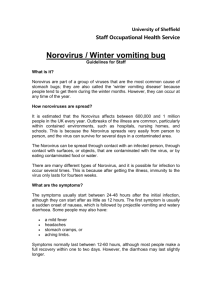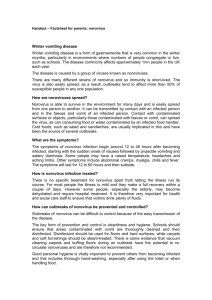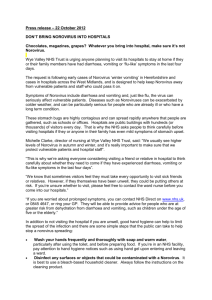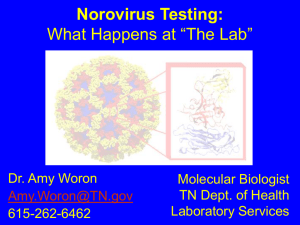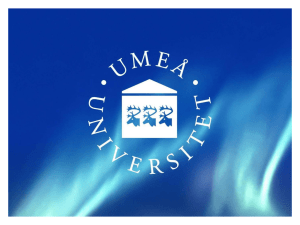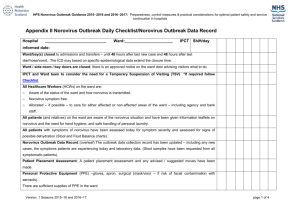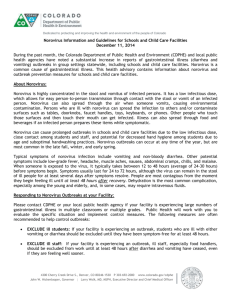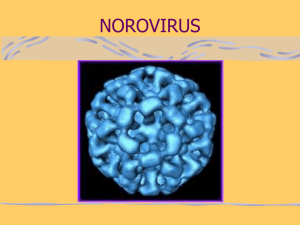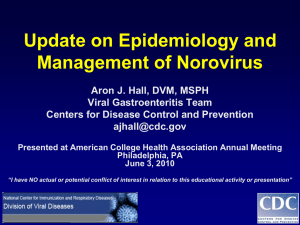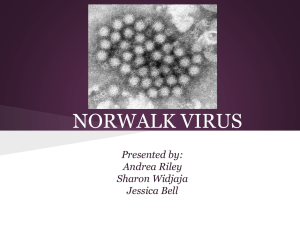Norovirus - Mymensingh Medical College
advertisement
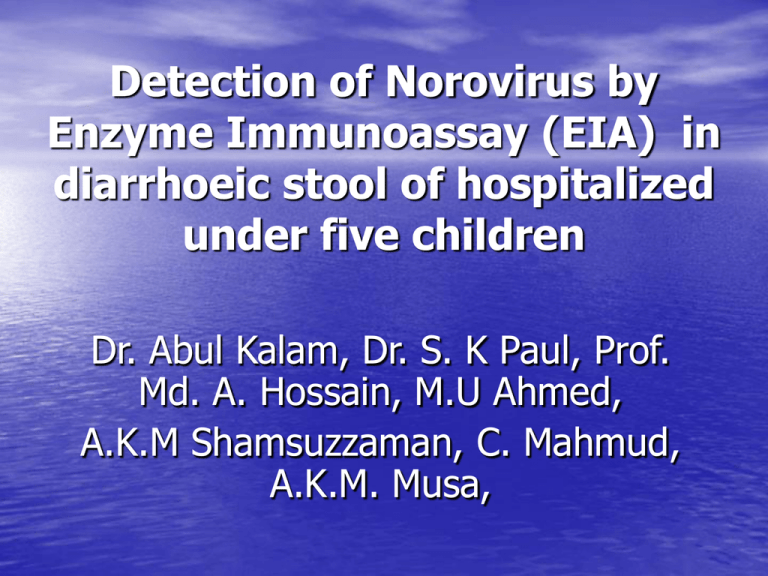
Detection of Norovirus by Enzyme Immunoassay (EIA) in diarrhoeic stool of hospitalized under five children Dr. Abul Kalam, Dr. S. K Paul, Prof. Md. A. Hossain, M.U Ahmed, A.K.M Shamsuzzaman, C. Mahmud, A.K.M. Musa, WELCOME TO THE PRESENTATION OF Detection of Norovirus by Enzyme Immunoassay (EIA) in diarrhoeic stool of hospitalized under five children Presented by Dr Abul Kalam M Phil (Thesis Part), Department of Microbiology, MMC Authors Abul Kalam1, S. K Paul1, Md. A. Hossain1, M.U Ahmed2, A.K.M Shamsuzzaman1, C. Mahmud1, A.K.M. Musa1, • 1.Mymensingh medical college, • 2 Department of Medicine, faculty of veterinary science , Bangladesh agricultural university Background • Gastroenteritis in the form of acute watery diarrhoea among under five children remains a major public health problem throughout the world. • Gastroenteritis is caused by wide range of enteropathogens including bacteria, viruses & protozoal agents. • The viral causes of diarrhoea are relatively less explored. Viral causes of gastroenteritis • Rotavirus, adenovirus, astrovirus and Norovirus are well recognized causes of diarrhoea. • Norovirus (NV) have appeared as one of the most common causes epidemic gastroenteritis. Norovirus • Norovirus is heralded as the discovery of the first virus specifically associated with gastroenteritis. • The Norovirus genus previously known as Norwalk like virus (NLV), Small round structured virus (SRSV) is positive sense single stranded RNA virus. • Norovirus is included in the family Caliciviridae. Genogroups of Norovirus • Norovirus is divided into two distinct genogroups, GGI and GGII, based on genetic divergence in regions of the RNAdependent RNA polymerase and the major viral capsid protein (VP60). Genogroups 1 Genogroups 2 Norwalk Hawaii Southampto Snow n Mountain Chiba Toronto Desert Shield Bristol viruses Lordsdale Research on Norovirus • Research regarding Norovirus progressed slowly by being difficult to detect because of failure or difficulty in growing them in cell culture, low levels of shedding in feces, their small size, and the lack of suitable assays for their detection until 1992 when the development of molecular biologic methods enabled rapid progress. • Still very little information is available regarding the impact of NV infection and prevalent genogroups in Bangladesh Objectives • the present study was designed to see the prevalence of Norovirus (NV) along with its genogroup in under five children. Study place and period • This study was done in the department of Microbiology, Mymensingh Medical College (in collaboration with the department of Medicine under Faculty of veterinary science, Bangladesh agricultural university) • Study period was from March 2006 to February 2007. Subject selection • A total of 92 stool samples obtained from cases of acute watery diarrhoea admitted in paediatric ward of Mymensingh Medical College Hospital. • Only under five children were selected for this study Methods and materials • The samples were tested by Norovirus EIA (SRSV1 TM, Senka Deiken Ltd ,Tokyo, Japan) according to kit manual. • The kit uses two wells for each specimen, one to detect Norovirusgenogroup (GI) and the other to detect Norovirus-genogroup (GII). Result •Among the 92 stool samples, 4 (4.34%) were positive for Norovirus. •All belong to Genogroup 1. Comment • This study showed that prevalence of Norovirus is not remarkable in Bangladeshi children • This aspect needs further evaluation including larger population using molecular techniques like Reverse transcriptase Polymerase chain reaction (RT- PCR).
